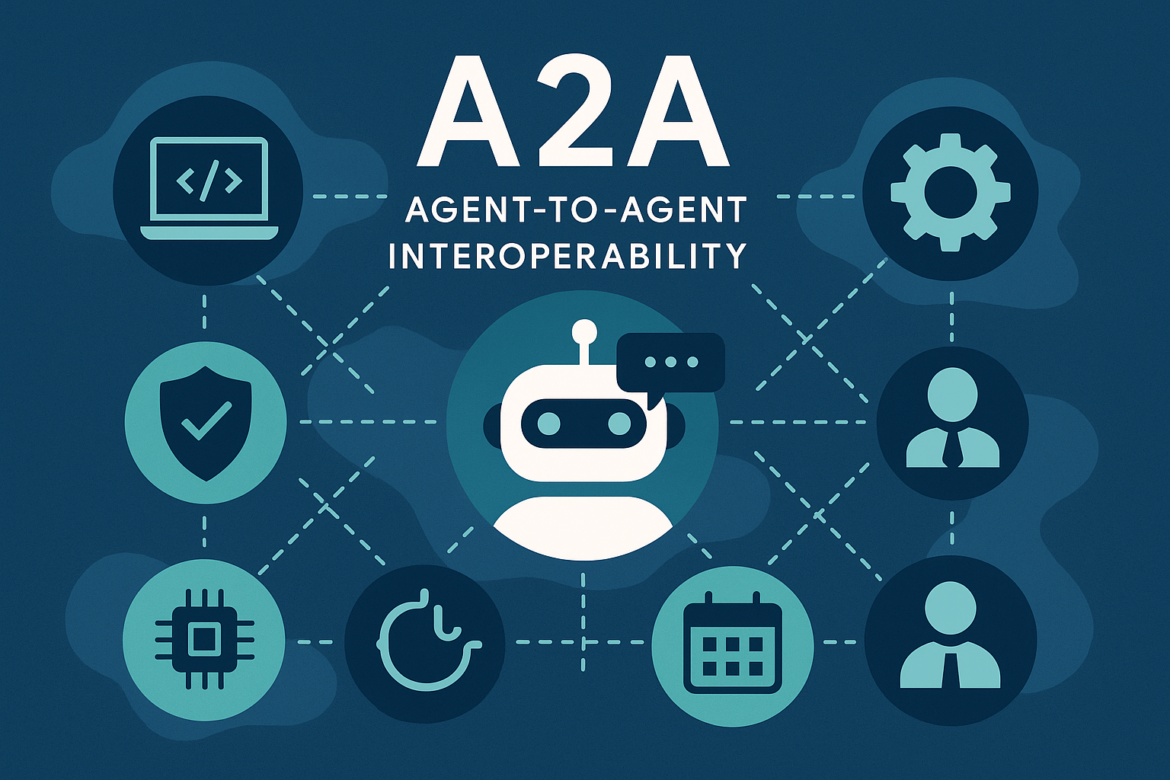In a world where AI is evolving from passive tools to intelligent agents, we’re about to cross a major threshold: interoperability. The idea that AI agents — whether it’s your voice assistant, a chatbot, or a recommendation engine — can not only act independently but collaborate with each other across ecosystems.
Enter A2A (Agent-to-Agent interoperability) — an open initiative spearheaded by Google, with support from industry giants like Amazon, OpenAI, and Microsoft.
But while A2A opens exciting new doors for user experience and AI ecosystems, it also kicks open a whole new realm of cybersecurity questions. Let’s break down what A2A is, how it works, and why security must be at the core of its evolution.
What Is A2A?
A2A (Agent-to-Agent) interoperability is an emerging protocol and framework that allows AI agents from different vendors, platforms, or services to communicate, collaborate, and coordinate tasks — on behalf of the user.
Think of it like microservices for AI agents.
Imagine this:
- Your personal finance bot speaks directly to your calendar assistant to schedule bill payments.
- A shopping assistant compares offers between agents from different retailers and negotiates the best deal.
- A travel planner coordinates with your company’s HR bot to arrange leave and approvals.
Instead of siloed assistants limited to their own ecosystem, A2A envisions a network of intelligent agents that can dynamically interact — securely, transparently, and with your consent.
Why A2A Matters (for Users and Developers)
For Users:
- Unified Experiences: No more jumping between apps and assistants.
- Smarter Workflows: Agents collaborate like a team, getting more done with less input.
- More Control: You decide which agents talk, when, and what they can share.
For Developers:
- Open Ecosystem: Build once, deploy across interoperable agents.
- Specialization: Create focused agents (e.g., for cybersecurity, finance, or travel) that collaborate with others in real time.
- Standards-Based: Future SDKs and APIs will lower development friction.
How Does A2A Work?
While technical details are still being finalized, the foundation of A2A includes:
- Agent Identity & Discovery: Agents identify themselves and discover others through secure protocols.
- Intent Negotiation: Agents negotiate tasks and capabilities — like microservices sharing APIs.
- Composable Actions: Tasks are passed between agents — think “AI workflows.”
- Privacy-First Design: Users explicitly approve communication between agents.
The ultimate goal? Seamless, secure interoperability across AI ecosystems — from mobile to cloud to embedded systems.
The Cybersecurity Angle: Opportunities & Risks
As promising as A2A sounds, opening up agent-to-agent communication also exponentially increases the security stakes. When agents from different vendors begin collaborating, a single weak link could compromise user data, system integrity, or even critical infrastructure.
Let’s look at key cybersecurity implications of A2A:
1. Expanded Attack Surface
With multiple agents talking to each other across networks and platforms, every connection becomes a potential vector for:
- MITM (Man-in-the-Middle) attacks
- Spoofing & impersonation of trusted agents
- Eavesdropping on sensitive conversations between agents
Every communication channel must be encrypted, verified, and monitored.
2. Agent Authentication & Authorization
Agents must verify each other’s identity and understand what actions they’re authorized to perform.
Expect to see:
- OAuth2 and mutual TLS for agent authentication
- Role-based and intent-specific authorization layers
- Possibly zero-trust architectures between agents
Just like humans authenticate into systems, agents will need digital passports and behavior verification.
3. Privacy, Consent & User Control
With multiple agents sharing data, who gets access to what becomes a critical question.
- Users must grant explicit, granular consent
- There should be transparent logs of who said what to whom
- Compliance with GDPR, CCPA, and global data privacy laws is non-negotiable
Think of this as privacy by architecture, not just design.
4. Risk of Malicious or Compromised Agents
Not all agents will be secure or well-behaved. Risks include:
- Malware-ridden agents acting as trojan horses
- Compromised agents becoming leak points
- Supply chain attacks where third-party agent SDKs are manipulated
Security frameworks will need:
- Agent reputation systems
- Anomaly detection in agent behavior
- Sandboxing or isolation of unknown agents
5. Standards for Secure Interoperability
For A2A to succeed, we’ll need:
- Open, auditable security protocols
- Formal agent contracts and schemas
- Possibly certification programs for agents that meet security baselines
Just like the web has HTTPS and TLS standards, A2A will need security protocol stacks — maybe A2A-Sec 1.0 someday?
A Cybersecurity Use Case: Agent-Driven Threat Detection
Imagine a future SOC (Security Operations Center) powered by A2A:
- A network monitoring agent detects suspicious traffic
- It calls a vulnerability assessment agent to cross-check with known CVEs
- A cloud security agent checks recent configuration changes
- A reporting agent prepares a compliance-friendly alert
All this happens in seconds, autonomously, without waiting for human correlation.
Security agents collaborating = faster threat response, lower MTTR.
The Takeaway: A2A Needs Security Architects at the Table
As exciting as A2A is for productivity and innovation, we cannot afford to let security be an afterthought. Developers, security professionals, and policymakers must come together to design:
- Secure agent discovery protocols
- Standardized identity and intent negotiation
- Governance frameworks for agent ecosystems
This is not just an AI problem — it’s a foundational cybersecurity architecture challenge.
Final Thoughts: We’re Building the Internet of Agents
First came the internet. Then the web. Then mobile apps and smart assistants.
Now, with A2A, we’re building the Internet of Autonomous Agents — and just like every revolution before, security will define whether it thrives or collapses.
As someone who straddles the line between cybersecurity and AI, I see this as a call to arms for all of us: to secure the next frontier, before it’s too late.
Read Google’s announcement: A2A – A New Era of Agent Interoperability


Leave a Reply